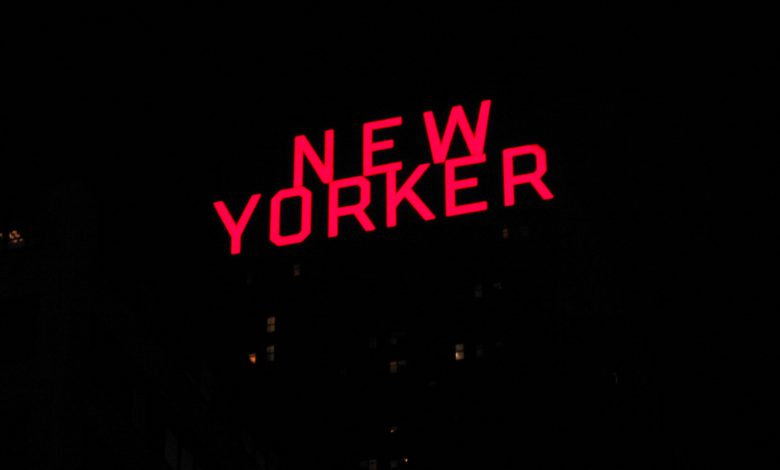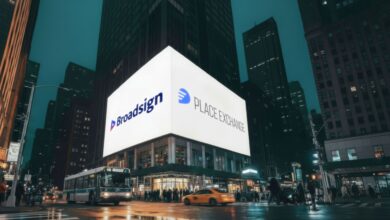Channel Letters: Non-Routine Retrofits
Addressing the challenges and components of retrofitted channel letter projects
In life, things aren’t always as they appear. Sometimes even the most seemingly routine tasks can present challenges. Well, retrofitting a channel letter project with LEDs can also bring up some unforeseen difficulties.
John Anderson, president of the Austin-based electric sign shop Mega Volt, Inc., recalls one specific case, “A florist approached me to replace the faces in their 4′ x 6′ double-faced sign,” he recalls. “At first, a project like this would seem like one of the most straight-forward retrofit jobs imaginable: just replace the florescent tubes with double-sided LED strips.” But Anderson notes that upon a closer look, the job proved to be a much more involved process than initially determined.
With signage, these kinds of examples come up regularly. Since there are so many factors involved with measuring, examining, and building the most effective end-product, elements are almost certain to fluctuate as the project moves forward. With retrofitting channel letters, sign makers must consider color, lighting, letter size, costs and more to deliver a top-quality solution.
“For channel letters, there are solid products from many manufacturers that easily illuminate standard channel letters,” Anderson says.
Because LEDs have become a dependable, long-lasting lighting source in signage, it makes sense to use them while replacing existing lighting elements in a retrofit project.
Why Retrofit?
“There are a few obvious reasons retailers (sign owners) are making a concerted effort to remove neon and replacing this light source with LED solutions,” explains Michael Bluhm, director of Product Solutions-Sign Group, SloanLED.
He points to energy as a top reason for replacing neon with LEDs, and the fact that operating costs can also go down as a result of making the switch.
“Most neon signs use very inefficient core and coil transformers that increase line voltage from 110 up to 15,000 volts,” says Bluhm. “This high-voltage supply compared to low voltage LEDs (12VDC to 24VDC) will require more energy to produce the same level of light. The benefit to the sign owner is immediate and can reduce their energy cost by 40 to 60 percent.”
LEDs are cost effective versus neon because neon “requires a neon bender to make the glass in the shape of the sign,” continues Bluhm. “In addition, the ancillary parts required to install neon into a sign is more involved with GTO cable, electrode boots, riveted tube supports and conduit.”
Along with this, LEDs can lower maintenance costs due to their favorable stability and longevity. They can also alleviate some headaches, as we’ve seen in real world applications. Going back to Anderson’s 4′ x 6′ double-faced sign project for the florist, he noticed some red flags that came with the existing lighting.
“Upon examination of the sign, many problems became apparent,” he recounts. “The sign was only four inches deep, and the florescent tubes created very noticeable hot spots due to their close proximity to the sign face (1 inch). I also found a neon transformer inside the cabinet-still powered up with nothing connected to it. Clearly, the sign had a neon border on it at one point that had been removed.”
But it isn’t solely the lighting aspect that sign makers need to address. The letters themselves, in both size and construction, play a major role in the retrofitting process.
Follow the Letter
“The channel letter size and depth will dictate the amount of LEDs that will be needed for proper illumination at the face,” states Joe Reis, director of LED Signage Innovations at International Light Technologies.
A sign maker will typically want to use more LEDs as the letter gets deeper so that the light is adequately spread from the source.
“Overall square footage of the sign cabinet, divided by the total lumen output of LED modules, will give you a total lumen output per square foot of sign face,” explains Reis. “My rule of thumb is minimum of 250 lumens per square foot.”
Anderson says that six inches was the standard depth for building neon channel letters. “This depth is easily accommodated by most retrofit LED products designed for channel letters,” he continues. “For even illumination, you’ll generally need the same number of ‘strokes’ of LED modules versus what resided in the letter before. There are now a variety of LED modules designed for greater spacing, but in my experience these work best for cabinet retrofits rather than for channel letters.”
If there is a trend in channel letter size, it’s that they have been decreasing in depth recently. A lot of this is due to how reliable LEDs are in sign projects.
“With the availability of better optics over LEDs, channel letter depths have been decreasing,” says Bluhm. “Neon channel letters are typically four to five inches deep due to UL requirements of spacing. If neon is in a sign, LEDs will work fine.”
Be wary of the condition of the channel letter as well. Letters in good condition should be prime for a retrofit, but those in bad shape pose serious problems.
“The physical conditions of a set of old channel letters or fabricated sign cabinet can be a retrofit game changer,” Reis offers. “If the set of channel letters are so old that the trim on the faces is starting to delaminate or the steel frame of the fabricated cabinet has rusted out, you may have to let your client know that the job will entail a lot more than just retrofitting the neon or fluorescent lamps to LEDs.”
On the flip side, “If the letters and cabinet are in good condition, then a LED retrofit is the way to make that old tired sign come back to life,” says Reis. “The sign will not only look great, but it will start saving your customer money the day you turn it on.”
Finally, signage can be featured as single-sided or double-sided, though channel letters are typically single-sided. In the case when double-sided signage is found-in applications such as sign cabinets-there are often additional challenges to face during a retrofit.
“There is often a support pole through the middle of the sign that must be accounted for to prevent shadows,” says Anderson. “Also, since the LEDs in a double-faced sign are generally centered in the middle of the enclosure, there is half the distance to the sign face. Choosing an LED with a wide beam angle is very important in this application in order to maintain an even face illumination without hot spots.”
With single-sided letters, there may be more options for LED implementation. Reis says, “With new LED modules that have lenses to spread the light on them, it is much easier and more forgiving to retrofit a set of channel letter from neon to LED. The installers are able to retrofit a double-stroked five-inch deep neon channel letter with a single stroke of LEDs and achieve the same, if not better, illumination.”
The LED Aspect
In these retrofit jobs, once the structure is determined to be sound, sign makers can turn to the lighting aspect and implement the LEDs. There are a few different factors to consider when looking at the lighting component.
First and foremost is to look at the lighting output. What should one expect with LEDs versus neon?
“LED light output is comparable with neon,” Bluhm says. “Another benefit is the viewing angle of a lensed product will provide more coverage than neon on the face of a channel letter.”
Bluhm explains that LED brightness has increased over the past decade and in configuration of front lit, back lit or both, “they can easily provide enough light for all three of these applications,” he states. “That being said, LED channel letter modules make a great solution for removing neon and replacing with an LED solution.”
And it comes down to picking the correct lighting for that specific sign. Sign makers will want to consider things like sign faces and lumen output when making a decision.
“Lighting output of LED retrofits is a matter of choosing the right type and quantity of modules,” Anderson says. “It’s a fairly easy swap from neon or florescent to LED with white faces. If the faces are a deep, saturated color you should plan on significantly more product to achieve the lumen output and even face illumination the sign had before.”
Color temperature is a factor that will also come into play.
“Warm white LEDs tend to look better behind yellow and orange faces,” Anderson continues. “Cool white behind green, turquoise, etc. For blue, there are blue LEDs that may look better depending on the shade. For red faces of course, there are red LEDs and that is generally what should always be specified in this face color.”
Taking the LED and comparing it to what is being replaced, Reis says that “‘Sign White’ is a term that we used for white 6,500K neon. What you really want to look for is the CRI (Color Rendering Index) of the color of white LED light. The higher the CRI number (e.g., 80, 90, etc.) the better the white light will render the colors that you are illuminating.”
For example, if you’re using a 6,500K LED with a 70 CRI, the colors will not show as true as one with a higher CRI, like 85 CRI.
“This also holds true for the higher color temperatures,” says Reis. “Just because an LED manufacturer has 10,000K LEDs in their module does not mean it will be brighter than 6,500K LED modules. It just means that it will be a very cool blue and normally a low CRI.”
Benefits and Rewards
When Mega Volt’s Anderson rolled up his sleeves and went to work on the project for his florist customer, he landed on one option out of several, implementing a new design with a routed aluminum face.
“In the end, I opted for a side-illuminating product from Principal LED,” he says. “Most module manufacturers now make a product for this application, but I appreciated Principal’s detailed specs on beam angle.”
One of the bigger issues, though, became dealing with the portion of the sign that was not illuminated.
“It would be a waste of light and energy to illuminate this entire 24-square-foot enclosure when only eight square feet or so was back-lit,” he recalls. “My solution was to build internal baffles to which the LED side-lit modules would mount.”
“The result exceeded my expectations,” Anderson concludes, “and a single 60 LED power supply now evenly illuminates both sides of this large, narrow sign cabinet.”
This is an example of how LEDs can add to a retrofit project, even in the face of some unforeseen challenges. It’s also a true benefit to the customer who will likely save money in the long run with efficient lighting and less maintenance.
“Retrofitting provides a serious cost savings over building a new project,” Anderson adds. “The lighting level can often be upgraded while lowering electrical usage. There are also significant savings over installation, disposal, permitting, etc.”
Make Informed Decisions
Things aren’t always as they appear. A sign structure may look sturdy and viable for a retrofit, but up close has flaws that need to be fixed. Or the color of an LED may look bright and resilient, only to be washed out by a dense, off-colored sign face. Sign makers come up against these challenges every day; especially during retrofit jobs. It’s important to inspect the sign carefully and make informed decisions so that the customer is happy with the quality of the final product.










